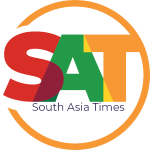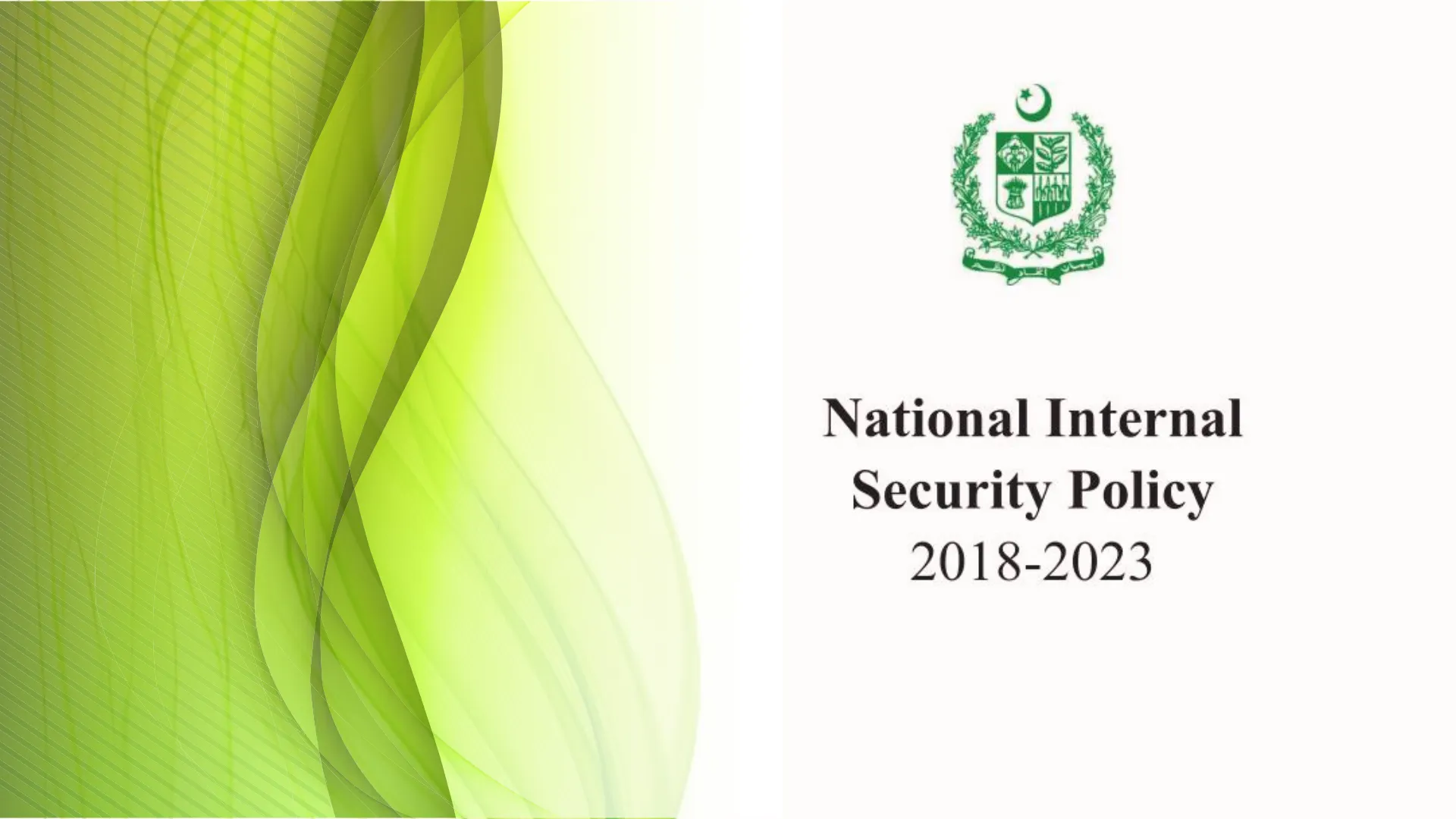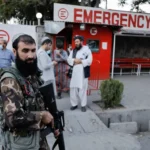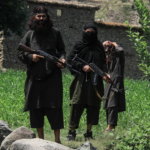The concept of security is rapidly evolving due to the complex contemporary challenges. It has multiple and overlapping dimensions, however, broadly speaking, it can be mainly categorized into two domains, i.e. internal, and external. Notwithstanding, the theoretical underpinning of the concept, internal security, in simple words means “the preservation of sovereignty and integrity of the state from disruptive and anti-national forces of the state”. Internal security objectives are sometimes available in public discourse in the shape of a national policy. Pakistan’s first national internal security policy (NISP) was issued in 2014 followed by a National Action Plan (NAP).
These policy documents guided the kinetic operations and numerous counter terrorism legislation in the country. Building on the hard-earned successes of NISP 2014 and NAP, the government of Pakistan unveiled NISP 2018.
This document provides comprehensive recommendations for the administrative, socio-economic, and ideational domains with the 6Rs strategy i.e., Reorient, Reimagine, Reconcile, Redistribute, Recognize and adoption of a Regional Approach. The tenure of NISP 2018 is completing this year, therefore, it is the right time to critically assess the efficacy of this policy for sustainable peace.
The whole of the nation’s approach adopted by the NISP 2018 describes the concept of a peaceful, democratic, and inclusive society forged by promoting rule of law, inclusive growth, and respect for diversity by creating a shared vision, provision of social justice and ensuring political stability. NISP 2018 outlined short, medium, and long-term objectives to achieve the strategic and operational goals for strengthening the state-citizen relationship. The short-term objectives are aimed at addressing the multiple security challenges of terrorism and extremism while the medium-term objectives tend to address the systematic challenges faced by the internal security of Pakistan. Lastly, the long-term objectives critically evaluate the factors contributing to insecurity and violence disturbing the peace and stability of the country.
The NISP 2018 is based on six prong strategy. A total of 120 objectives are outlined in the policy, ranging from the use of hard power to soft power, judicial to administrative reforms and from legal to executive measures.
Although all the objectives outlined in NISP are critical, however, for an in-depth analysis, three objectives namely ‘National Narrative’, ‘Media Reforms’, and ‘Tourism & Cultural Activities’ envisioned under the second pillar ‘Re-imagining the Society’ have been assessed in this paper. Unlike the other pillars and objectives outlined, these three not only focus on building a diverse society but also help in promoting the soft image of Pakistan in the international arena.
First Objective Under NISP of National Narrative
The responsibility for the development of a comprehensive ‘National Narrative’ has been assigned to the National Counter Terrorism Authority (NACTA) and the provincial governments. Under this objective, two short-term goals have been tasked to NACTA. Firstly, the formulation of a ‘National Cultural Plan’ and secondly to actively involve the civil society at the provincial level as a key partner. NACTA has been successful in formulating a strategy for the implementation of the ‘National Cultural Plan’ which serves the purpose of making society more vibrant to rekindle cultural values. The celebration of cultural festivals in each province and the preservation of cultural heritage sites are also made part of the plan. The provincial governments and their respective municipal authorities are tasked to execute the policies.
The plan on paper may seem simple with promising results but other than Punjab and KPK, it was at the bottom of the priority list of Balochistan and Sindh. According to Punjab Information and Culture Department, the provincial government has organized multiple special events and programs for the promotion of the local culture of Punjab. Currently, three mega projects have been completed and twenty-two projects are ongoing which include the upgradation of existing cultural facilities, museums, and art council.
According to the Annual Development Program (ADP) 2022-23, Khyber Pakhtunkhwa Cultural Directorate has reserved 100 billion rupees in phase-1 for the development of cultural and archaeological infrastructure. Phase -1 includes the establishment of cultural complexes at the divisional level and the promotion of cultural-community activities. Furthermore, according to the same report, out of 124 total projects, 90 are ongoing and 38 are due for completion. The organization of cultural activities and the prevention of cultural heritage sites not only help in promoting the local culture but also assists in developing a peaceful society based on the national narrative of co-existence and acceptance of diversity.
Ministry of Tourism, Archeology, Culture and Youth Affairs Sindh’s annual progress report 2018-19 indicates the allocation of a total of 14,495 million for cultural promotion and heritage protection.
The government has announced several initiatives to promote local culture through engaging various cultural research centers. Moreover, funds have been allocated for the restoration of various archaeological sites in Karachi, but practical progress is not visible due to the less effective management structure. The cultural departments of Balochistan hardly tried its implementation. Even if they did, not many details about the projects have been announced to the public except for the amount of 27.9 million that had been allocated for cultural promotion and heritage protection.
Second Objective Under NISP of Media Reforms
Regarding the second objective of ‘Media Reforms’, the Pakistan Telecommunication Authority (PTA) and Pakistan Electronic Media Regulation Authority (PEMRA) have been made responsible for the formulation and implementation of the strategy to regulate media, control hate speech, and airing of fake content.
The securing of online spaces to curb provocative statements is a long-term objective assigned to PTA. It has imposed ‘Removal and Blocking of Unlawful Online Content (Procedure, Oversight and Safeguards) Rules, 2021’ which has helped to block objectionable content. Famous social media apps Snack Video and BIGO Live are the first companies to register with PTA under these rules. PTA has also started awareness and behavior change communication campaigns. However, it is worth mentioning that monitoring mechanisms had been developed but could not be implemented as planned due to which rogue elements are tarnishing the social fabric of society by using cyber spaces for their nefarious designs.
The performance of PEMRA is satisfactory as it has issued a total of 335 show cause notices and 118 pieces of advice to various TV channels for violating the Electronic Media Code of Conduct 2015. PEMRA Annual Report of 2019-2020 published in the year 2021 indicates that a fine of Rs 23.1 million was imposed on satellite TV channels on account of airing fake news and hate speech. However, hate speech and fake news could not be fully controlled.
Third Objective Under NISP of Tourism & Cultural Activities
The third objective ‘Tourism and Cultural Activities’ assign crucial tasks of promoting the local cultures of Pakistan across borders to the Ministry of Interior and Department of Cultures. In this regard, the Ministry of Culture was successful in developing an inclusive and participatory cultural policy with equal participation of all provincial and federal stakeholders with PNCA (Pakistan National Council of Arts) as the core facilitator. For the positive image building of Pakistan, PNCA took vibrant steps to promote cultural activities both locally and across borders motivated by patriotism. For instance, organization of cultural event on visit of Uzbek President on 3rd March 2022, Jashn-e-Nowruz held on 17th March 2022, “The Golden Hour” Art Exhibition held on 7thJanuary 2022, “Maritime Treasures of Pakistan” Art Exhibition from 1st to 3rd March 2022, “See Pakistan” Photography Exhibition held from 19th March to 15th April 2022 are just to name a few.
The agenda of cultural promotion is directly linked with tourism. In this regard, The Tourism Department of Punjab is currently investing 282 million according to the Annual Development Program 2021-22, on various regular and district development packages based on tourist-friendly policies.
The development of various resorts, parks and lakes to promote Eco tourism had been a key priority of the Punjab Tourism Department. A total of 39 projects are undergoing with 17 new schemes introduced.
The Integrated Development Strategy (IDS) adopted by Khyber Pakhtunkhwa, in this regard, prioritized the development of tourism department. It has been declared in the IDS document of the year 2018-19 that KPK caters 19% of the total tourist traffic hence focus was placed on increasing KPK’s domestic tourism by 10 per cent every year. Currently 24 projects are ongoing with 4 new projects introduced.
The Tourism Directorate of Balochistan, and Sindh tried to outline necessary steps for the promotion and development of tourism, but the implementation had been critically weak. The stats available on the websites of Balochistan, and Sindh Tourism Department are inadequate and generally outdated supporting the fact that cultural promotion and tourism both have been on the bottom of priority list of these two provincial governments.
Conclusion
The provinces of Pakistan are rich in cultural diversity and form a vital part of our national identity. They require effective governance, along with administrative capacity and finances to protect and promote their tourism, culture, and heritage. Moreover, social media cells of provincial departments lack the proficiency to regulate, organise and update their data on websites. The Annual Progress Reports are often difficult to access and, even if the information is available, it is outdated and inadequate. This proves to be a big challenge for researchers and analysts to determine the successes and failures of the policies initiated.
NISP seems to be an ambitious policy as it outlines a long list of 120 objectives but, on the ground, one can witness a clear gap between the policy formulation and its implementation. The absence of the KPIs in the NISP is testimony to the fact that the policy formulation process is less transparent and lacks inclusiveness. The complete burden of responsibility lies with the government agencies while ignoring civil society and the private sector. The objectives of NISP can only be achieved if there is a minimum but realistic agenda instead of a long wish list with an inclusive approach. For this, the government needs to incentivize the private sector and civil society as it is a shared responsibility.
The views expressed in this article are the author’s own. They do not necessarily reflect the editorial policy of the South Asia Times.
Rida Bilal is a researcher with a keen interest in history, international relations, and geopolitics. She is an avid reader and aspiring writer.





Add a Comment